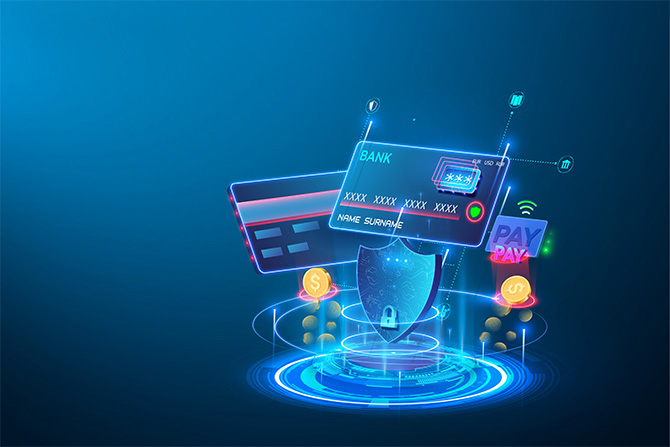Fraudsters are known to prey on victims when they are facing uncertainty, distress and anxiety. The current times are no different, as several recent bank failures and financial instability have left consumers feeling vulnerable about their personal and business finances. This heightened concern has created an environment where they may be more susceptible to being taken advantage of or making hasty decisions.
Fraudsters are using typical phishing, social engineering and malware tactics but with a fresh spin to exploit this uncertainty.
Three Most Common Types of Financial Fraud
- Phishing scams involve fraudulent emails or messages that appear to be from legitimate financial institutions. These messages often contain links to fake websites that resemble actual sites but are designed to steal login credentials and other sensitive information.
- Social engineering involves manipulating people into providing personal or financial information using techniques such as pretexting, baiting and quid pro quo. These methods involve creating false identities or offering something of value in exchange for personal information.
- Malware and malicious software are used to gain access to personal information. These can be downloaded onto a computer through email attachments or links in messages and, once installed, can be used to steal passwords and account numbers.
With advances in artificial intelligence and the use of bots, it’s going to be harder to detect fraud. Institutions and customers will need to work together to keep each other and their assets protected.
Ways to Prevent Financial Fraud
There are several steps financial institutions can implement to combat these threats and help protect their customers, as well as their organization. These start at the institution level.
Employee Training: Banks and credit staff are at the front of the fight. They must be fully trained in risk management. Staying in compliance will protect the clients and the institution.
Educate Customers: Banks and credit unions should provide regular education to their customers on how to identify and prevent fraud. This includes advising them to keep their personal and financial information safe and secure, to monitor their account transactions regularly and to report any suspicious activity immediately.
Implement Strong Authentication Measures: Financial institutions should implement multi-factor authentication for their online and mobile banking services to ensure that only authorized users can access their accounts.
Monitor Transactions: Banks and credit unions should closely monitor customer transactions for any unusual activity or signs of bank fraud. This can be done using automated fraud detection systems that can identify patterns and anomalies in customer behavior.
Secure Sensitive Information: Financial institutions should ensure that sensitive information such as customer data and login credentials are securely stored and transmitted using encryption and other security measures.
Stay Up-to-Date With Fraud Trends: Banks and credit unions should stay abreast of the latest fraud trends and tactics used by fraudsters to stay ahead of potential threats. These include identity theft, cybersecurity and account takeovers.
Have a Response Plan in Place: Banks and credit unions should have a comprehensive response plan in place that outlines the steps to be taken in case of a suspected fraud incident. This should include notifying customers, law enforcement and regulatory authorities if necessary.
It’s important to encourage customers and members to maintain heightened vigilance. Remind them to always contact their trusted financial institution if they are unsure if a communication is legitimate and to be wary of providing personal information online. Consumers should also regularly check their accounts for unauthorized transactions and monitor their credit reports for signs of identity theft. By being vigilant and taking steps to protect themselves, customers and members can help protect your institution and maintain consumer trust.
Years ago, simply having a good firewall was all a financial institution needed to stop most fraud. With advances in technology, there have been advances in crimes as well. Financial institutions must do more to protect their customers and themselves. The rise of cloud-based banking has led to more sophisticated attacks.
Fraud prevention starts at the institutional level, but its effects are felt at every level. By utilizing these resources and staying up-to-date on the latest fraud prevention techniques, financial institutions can better protect their customers from fraud and ensure the security of their organization.
To learn more, please visit www.oncourselearning.com.







